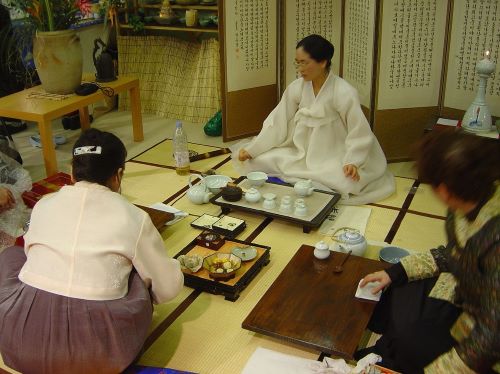

Tea has been around for centuries in a variety of forms and brewing methods. Its rich history almost seems too bold for its delicate nature, but tea is far more than just a plant. Although tea is rooted in ancient legends of spirituality and mysticism, modern science has proven its healing powers. In a nutshell: tea is legendary.
Modern tea
Today’s tea is a mix of ancient brewing methods and modern conveniences. For instance, tea is traditionally brewed in a teapot or Gaiwan and then served at a table. However, portable tea infusers make it possible for people to brew and drink fresh tea anywhere.
Although our modern lives command a portable solution to satisfy our tea habits, it wasn’t always this way.
The legend of tea
The origins of tea can be traced all the way back to first century ancient China where it was used as traditional medicine. Legend has it that in 2737 B.C.E., a Chinese emperor accidentally made tea when some leaves fell into a pot of boiling water. Noticing how the tea leaves were infused into the water, he tasted the mixture and found it to be delicious.
Another legend from India says Prince Bodhi-Dharma was disappointed that he could not meditate for nine years, avoiding sleep. He ripped off his eyelids and as they fell to the ground, they sewed the first ever tea seeds that later turned into the first ever tea plant.
Despite legends, tea has strong roots in Asia
Legends aside, tea is believed to have originated in Yunnan, China, as well as Tibet and Northern India. Tea was so important that tombs from the Han Dynasty (206 B.C.E. – 220 A.D.) contained tea.
Somewhere around 600-900 A.D., tea started gaining popularity through tea ceremonies. Tea was as much a part of Chinese culture as anything. In fact, it was even named China’s national drink.
We can thank a Buddhist monk named Lu Yu for taking the time to experiment with brewing tea to come up with the ideal methods to brew and consume tea. His methods were used in Buddhist ceremonies to promote harmony, spirituality, and contemplation.
With the way tea is served in the West, you wouldn’t think there was anything more to it than submerging the tea in water for five minutes. However, brewing tea properly is quite a process and given the delicate nature of tea, it makes sense that it was used ceremoniously.
Brewing tea properly is an art
When brewing tea, every second and degree count. For instance, green tea is especially delicate and should be brewed at a lower temperature, preferably between 120-135 degrees Fahrenheit. Many people think they don’t like green tea because it tastes bitter, but when brewed properly, green tea tastes light and sweet.
The other interesting thing about brewing tea is that you want to rinse the leaves first. The first time the leaves encounter water, the taste will be too strong to consume. After a quick rinse, the flavor becomes better.
After a first brew, you’ll reuse the same tea leaves and brew them again several times. Each time you rebrew the leaves, the flavor of the tea will change slightly. It will become a little lighter and sweeter, but will still maintain the natural flavors of the leaves you’re brewing. Sometimes you’ll start tasting notes that only show up after several brews. This is especially true of Puerh tea.
If you’ve never brewed tea this way, all you need to experience is one Japanese tea ceremony and you’ll be hooked. You’ll never brew tea from a bag ever again.
Tea in Japan was historically different
In China, people brewed tea leaves in water and sometimes chewed on the leaves. In Japan, however, tea leaves were consumed in their entirety by being ground into powder and whisked into boiling water. Today, this is known as matcha green tea.
Another delicious form of Japanese green tea is sencha green tea. This is tea created with steamed leaves.
Tea was a luxury in the West
When global trading took off in the 17th century, tea made its way to Europe and Russia. It was still considered a luxury, becoming popular in aristocratic classes in London and Paris. Tea became so popular in Britain that it outsold coffee in local coffee houses. Soon, afternoon tea became a staple for British households.
What’s in your cup?
Now that you know a little more about the legend of tea, what kind of tea will you drink next? Will you stick to what you know, or try something new? Hopefully, this article inspired you to try some more traditional teas. There’s nothing like brewing your own leaves and tasting the result.






